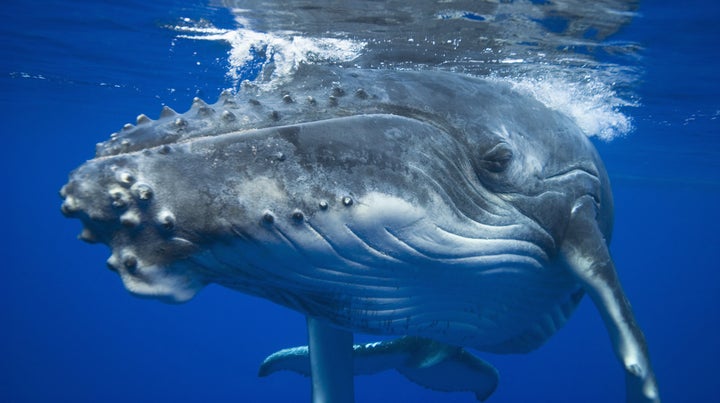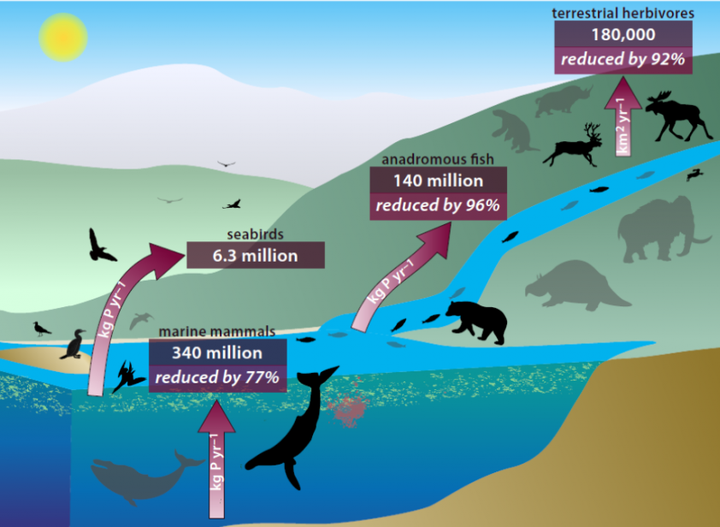
Whale poop is pretty powerful stuff -- and no, not in terms of its stench.
Scientists have long known that whale waste has the power to influence Earth's ecosystems. Vital nutrients found within the prodigious poop often end up traveling from the deep ocean to land, helping to fertilize our planet.
Now, a new study published in the Proceedings of the National Academy of Sciences on Monday details exactly how this compelling cycle of nutrients works and how the cycle has slowed due to declines in populations of whales and other species.
"In recent years, there have been a number of studies examining the transport of nutrients by large animals within oceans, across river systems, and over the land," Dr. Joe Roman, a biologist at the University of Vermont and a co-author of the study, said in an email. "To my knowledge, this is the first study that looks at this pattern across the globe, and over time. We have a new understanding of the role of animals in enhancing and maintaining primary productivity, through movements within and across marine and terrestrial ecosystems."
For the study, an international team of researchers developed math models based on historical data, heat diffusion and current animal populations to quantify the movement of nutrients -- including a key nutrient for plant fertilization called phosphorus -- across various ecosystems.
The researchers then used the models to estimate how the nutrient cycle may have changed from prehistory to now. They took a close look at the influence that big animals known as megafauna had on the cycle.
"We used the math model to predict the behavior of the extinct megafauna," Dr. Chris Doughty, a lecturer in ecosystem ecology at the University of Oxford and lead author of the study, told The Huffington Post. "We know little about these animals beyond their size, but with size we can predict food consumption and movement patterns. With this model, we can put all the original animals back into our world and see how nutrient cycling changed."

The researchers found that the nutrients released and transported by megafauna on land and in the oceans has dropped to just 6 percent of their levels tens of thousands of years ago, according to The Christian Science Monitor, before mass extinctions and population declines.
Examining marine mammals alone, the researchers found that the phosphorus released and transported by whales and others has dropped by 77 percent. In fact, whales -- which feed deep in the sea and come up to breathe at the surface -- once brought an estimated 750 million pounds of phosphorus up from the ocean each year. This number has now plunged to 165 million pounds.
And the movement of phosphorus from the sea to land by seabirds and fish has gone down 96 percent, Live Science reported. Just check out the diagram above.
"There was once a natural system of recycling phosphorus between the oceans and land that no longer exists," Doughty said. "This means, without these animals more phosphorus is lost more quickly to the bottom of the oceans. Easily accessible, mined phosphorus may run out in as little as 50 years."
A decline in phosphorus could negatively impact the growth of algae, which would disrupt both ocean and land ecosystems.
The researchers pointed to hunting, overfishing and habitat loss as the causes of drastic declines in animal populations, which has resulted in a shortage of nutrient-rich poop. For instance, whale populations are estimated to have declined by up to 90 percent over the last three centuries due to whaling, the researchers said.
While all animals are "distribution pumps" for key nutrients on a global scale, the megafauna are a critical part of the nutrient cycle, the researchers concluded.
"I was surprised that large animals were disproportionately important for the transport of nutrients," Doughty said. "Here we have shown that, in the past, animals constituted a global system of recycling phosphorus. By increasing populations of large, free-ranging animals we can partially replace this system of recycling and thus increase phosphorus concentrations on land."
Roman agreed that the study holds clues to how restoring large animal populations could revive an ancient nutrient cycle, which would benefit wild ecosystems and us.
"Our study opened up a new vision for the planet," he said. "In a sense, it provides a blueprint for ecological restoration: helping marine mammals recover, returning the natural flow of rivers, reducing overfishing, and giving large areas of land back to wild animals."
Also on HuffPost Science:
